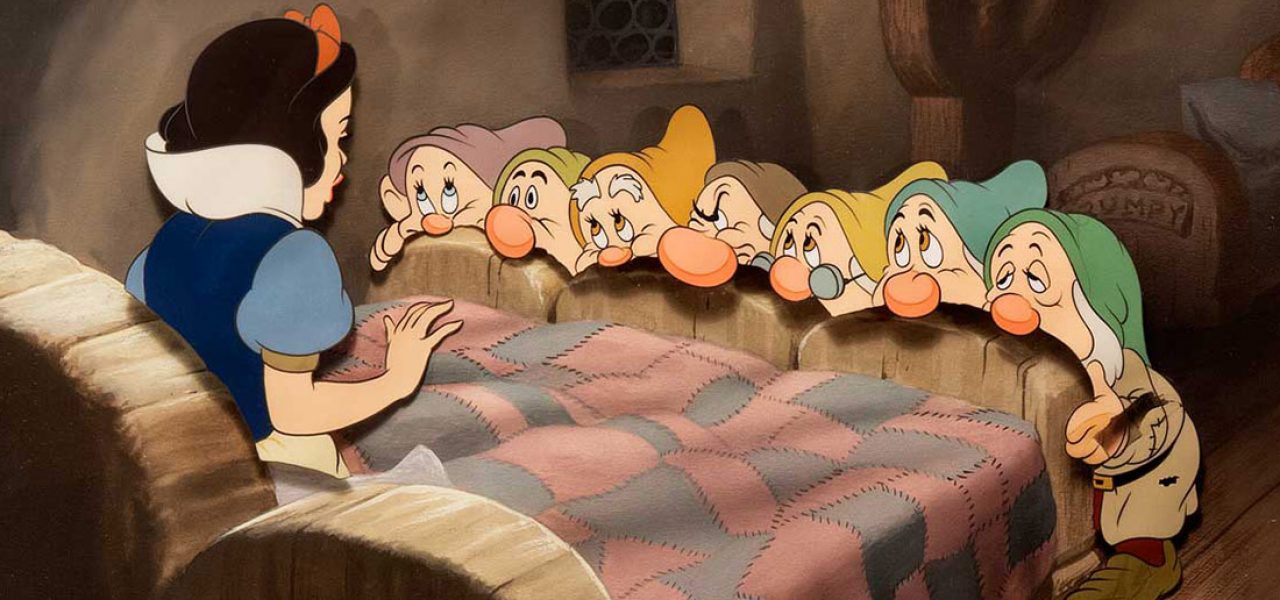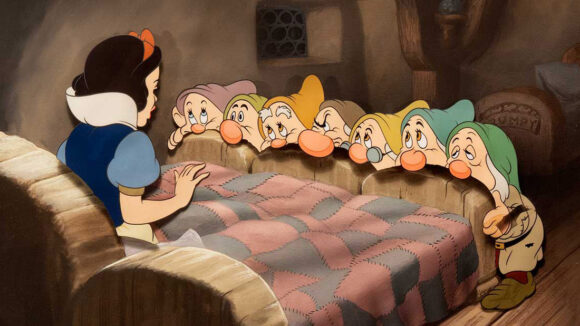

The Public Domain Is Working Again — No Thanks To Disney
On November 18, 1928, Steamboat Willie premiered in New York City and so Mickey Mouse was born.
Only eight months before, Walt Disney had lost rights to the character Oswald the Lucky Rabbit when his distributor, Charles Mintz, hired away most of Disney’s animators to make Oswald shorts on their own. Disney and his loyal partner Ub Iwerks regrouped and their new Mickey short was a sensation, one of the first to feature synchronized sound, and launched Disney’s animation studio on a trajectory that to this day continues to rise. In a real way, the birth of Mickey is the birth of Disney as the premiere, or at least most popular, global animation studio.
While Mickey Mouse helped establish Disney, it wasn’t until the commercial success ten years later of the studio’s landmark feature film Snow White and the Seven Dwarfs that the studio reached a secure financial footing. The juxtaposition of these two creations offers a chance to consider how Disney has exploited copyright, noting how the law protects new works from unauthorized copying while allowing artists free rein on older works.
At the time of Steamboat Willie and Snow White, the Copyright Act of 1909 governed. Under that law, a creator had a copyright on his creation for 28 years from “publication,” which could then be renewed for another 28 years. Thus, after 56 years, a work would enter the public domain.
Mickey, of course, was Disney’s own original creation. If the 1909 law governed copyright, the copyright to Steamboat Willie would have ended in 1984, and the short would have entered the public domain and be available for all to use.
However, before that 1984 deadline was met, Congress passed the Copyright Act of 1976, extending copyright protection for works made for hire to 75 years from publication – extending the copyright for Steamboat Willie through the year 2004. Then again, in 1998, Congress passed the Sonny Bono Copyright Term Extension Act (derided as the “Mickey Mouse Protection Act” by some observers due to the Walt Disney Company’s intensive lobbying efforts), which added another twenty years to the term of copyright. Steamboat Willie, then, remains under copyright protection through 2023 – 95 years after it first premiered.
Copyright law changes have meant that there haven’t been any mass expirations of copyrighted works for decades. On January 1, 2019, for the first time since the Sonny Bono Act took effect, a treasure trove of creative works entered the public domain.
In 1998, when the 20-year extension of the Sonny Bono Act took effect, works created in 1922 had already entered the public domain. The works released into the public domain on the first of this year pick up from that point, making available creative works from 1923. Unless the laws change again, new works will enter the public domain every January 1 until 2073.
Noteworthy about these newly unprotected works is that they were created at a dynamic time for the technology used to record sound and picture, and a groundbreaking time artistically. Works could be recorded in new ways, ways that make these works accessible even still — just a few of the cinematic and musical works now in the public domain are Charlie Chaplin’s The Pilgrim, certain Felix the Cat cartoons, including the classic, Felix in Hollywood, Cecil B. DeMille’s silent movie spectacular The Ten Commandments (not the Charlton Heston version), Buster Keaton’s Our Hospitality, and the jazz classics “King Porter Stomp” and “Tin Roof Blues.” Anyone is now free to make or use copies of the works in any manner they wish. No license or rights fee needs to be paid — a boon to creators.
From its very start in Kansas City, the Disney studio raked the public domain for seed material for its own productions, finding source material in Lewis Carroll’s Alice in Wonderland, the Brothers Grimm’s Snow White and the Seven Dwarfs, Sleeping Beauty, and Rapunzel, Charles Perrault’s Cinderella, Hans Christian Andersen’s The Little Mermaid and The Snow Queen, the Uncle Remus stories collected by Joel Chandler Harris, and Rudyard Kipling’s The Jungle Book, to name just a few.
But many other animators and filmmakers have been inspired by public domain works, too. Among them: Max Fleischer’s Gulliver’s Travels, based on Jonathan Swift’s tale; UPA’s classic short, The Tell-Tale Heart, based on Edgar Allen Poe’s immortal short story; Czech great Karel Zeman’s The Fabulous World of Jules Verne, inspired by several of the French novelist’s books; and the Ray Harryhausen stop-motion marvels Jason and the Argonauts and The 7th Voyage of Sinbad, based on Greek mythology and Arabic folklore, respectively — all proof that interesting and worthwhile new art can be created off the works of others.
Importantly, creators using public domain works do retain a copyright in what is new and original in their work. Thus, while anyone can tell the tale of The Snow Queen, only Disney can include a goofball snowman named Olaf, or two sisters named Elsa and Anna. At least until Frozen’s copyright runs out, in about eighty-five years.
In an important way, it is because Snow White was in the public domain that it was chosen to be Disney’s first animated feature. As recounted in Neal Gabler’s biography, Walt Disney: The Triumph of the American Imagination:
Walt said he could remember seeing a Snow White play when he was a boy, though he was probably recalling a film version of the play starring Marguerite Clark that screened on January 27 and January 28, 1917 in the cavernous twelve-thousand-seat Kansas City Convention Hall when he was fifteen.
So there had been, in Disney’s short lifespan of fifteen years, already two versions of Snow White published as theater and film, in addition to the original Brothers Grimm fairy tale. Because the work was in the public domain, it offered more opportunities for the story to be told. As Disney told an old business associate, “I know [seeing Snow White as a boy] played a big part in selecting Snow White for my first feature production.”
Ironically, much of Disney’s legislative lobbying over the last several decades has been focused on preventing this same opportunity to other artists and filmmakers. As Brewster Kahle, founder of the Internet Archive, told Smithsonian.com, “We have shortchanged a generation. The 20th century is largely missing from the internet.” The battle in the coming years will be to prevent further extensions to copyright law that benefit corporations at the expense of creators and society as a whole.
Additional works first published in 1923, and therefore whose copyright will no longer be in question this year, include year Noël Coward’s play “London Calling!,” Henri Matisse’s “Odalisque with Raised Arms,” M.C. Escher’s woodcut “Dolphins,” Wassily Kandinsky’s “On White II,” and Agatha Christie’s novel, The Murder on the Links.
Walt Disney Studios Presents Agatha Christie, anyone?

.png)